Tree Peonies Look Phenomenal At The Rear Of A Border: This Is How You Can Grow Them

PERENNIALS > PEONIES > TREE

Elizabeth is a Permaculture Garden Designer, Sustainability Consultant and Professional Writer, working as an advocate for positive change. She graduated from the University of St. Andrews with an MA in English and Philosophy and obtained a Diploma in Applied Permaculture Design from the Permaculture Association.
Reviewed By COLIN SKELLY

Colin is a Horticulturist and Horticultural Consultant with experience in a range of practical and managerial roles across heritage, commercial and public horticulture. He holds the Royal Horticultural Society’s Master of Horticulture award and has a particular interest in horticultural ecology and naturalistic planting for habitat and climate resilience.
IN THIS GUIDE
PEONY GUIDES
Companion Planting
Container Growing
Overwintering
Planting
Pruning
Support
Tree Peonies
Varieties
Tree peonies are not actually trees at all; they are shrubs, with pleasing foliage and dramatic blooms.
These plants look lovely at the back of a border, but is this plant the right choice for you? And if so, how can it be grown successfully?
Overview
| Botanical Name | Paeonia ssp. |
| Common Name(s) | Tree peonies |
| Plant Type | Perennial Shrub |
| Native Area | China |
| Hardiness Rating | H6 |
| Foliage | Deciduous |
| Flowers | White, pink, red, peach, yellow blooms |
| When To Plant | September-October |
| When To Prune | February |
Sunlight
Preferred
Full Sun or Partial Shade
Exposure
Sheltered
Size
Height
1.5 – 2.5M
Spread
1.5 – 2.5M
Bloom Time
Summer
Soil
Preferred
Most fertile soils
Moisture
Moist but well-drained
pH
Any
Tree peonies are members of the Paeonia genus which have woody stems and a shrubby form.
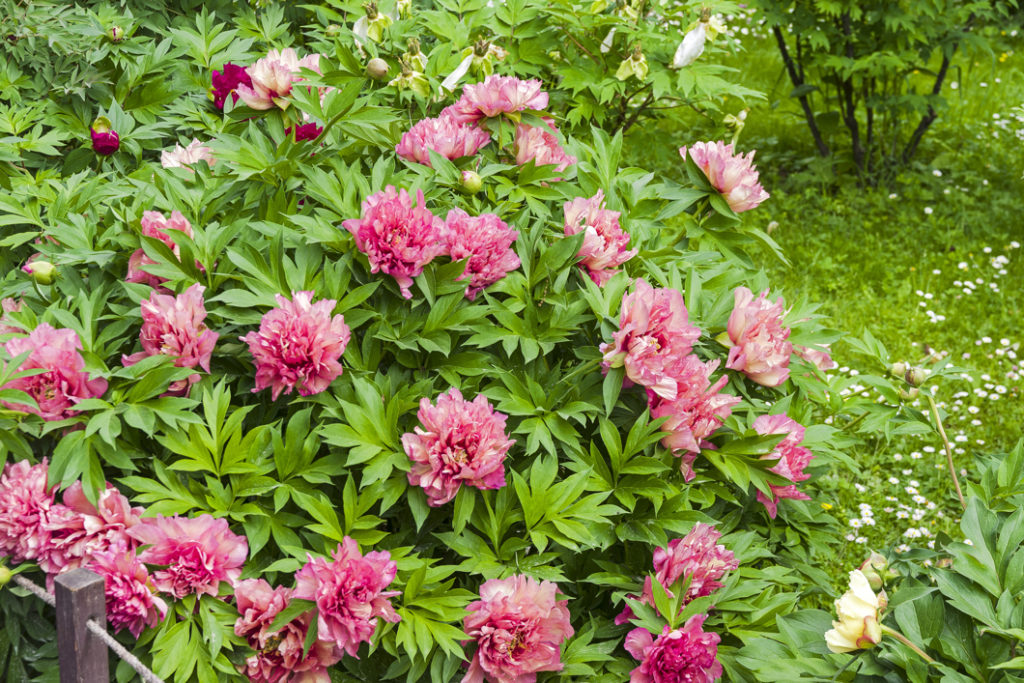
The tree peonies grown in gardens are often hybrids, derived after long cultivation and through cross-breeding from wild Chinese species in the Moutan group of Paeonia.1Zhou, S., Zou, X., Zhou, Z., Liu, J., Xu, C., Yu, J., Wang, Q., Zhang, D., Wang, X., Ge, S., Sang, T., Pan, K., & Hong, D. (2014). Multiple species of wild tree peonies gave rise to the ‘king of flowers’, Paeonia suffruticosa Andrews. The Royal Society Proceeding B: Biological Sciences, 281(1797), 20141687. https://doi.org/10.1098/rspb.2014.1687
Tree peonies are prized for their attractive leaves and especially for their large, bowl-shaped blooms.
Tree Peony Vs Peony – What’s The Difference?
The difference between tree peonies and other peonies is that these are shrubs, with woody stems, rather than herbaceous perennials.
They will lose their leaves in winter, but unlike other peonies, will not die back to the ground.
Common Varieties
When choosing a tree peony, one of the most important considerations for most gardeners will be the colour and form of the flowers.
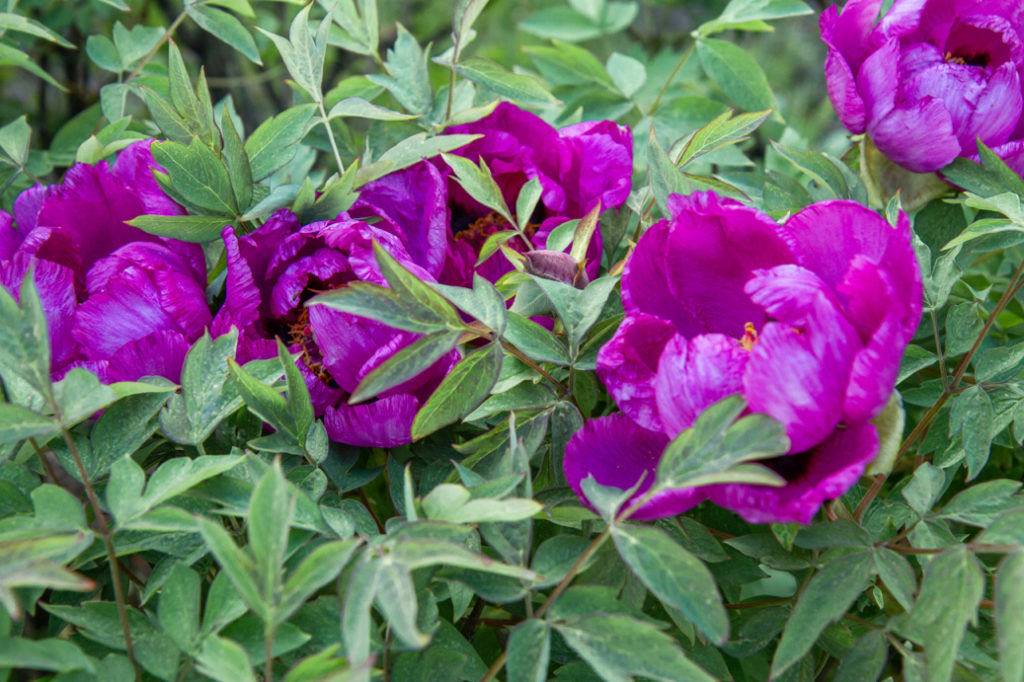
There are single, semi-double and double-blooming cultivars available which come in a huge range of different colours and shades.
Some great varieties to consider include:
- P. delayavi var. ludlowii
- P. ‘Duchess of Kent’
- P. ‘Duchess of Marlborough’
- P. x lemoinei ‘High Noon’
- P. x lemoinei ‘Souvenir de Maxime Cornu’
- P. ‘Reine Elizabeth’
- P. ‘Rockii’
- P. ‘Shimane Sedai’
- P. ‘Shimanishiki’
- P. ‘Showanohokori’
- P. x suffruticosa ‘Renkaku’

How To Grow Tree Peonies
Gardeners will not typically grow tree peonies from seed.
Most of the tree peonies offered for sale are grafted onto herbaceous peony rootstock.
You should be able to see the raised graft scar when you purchase your plant.
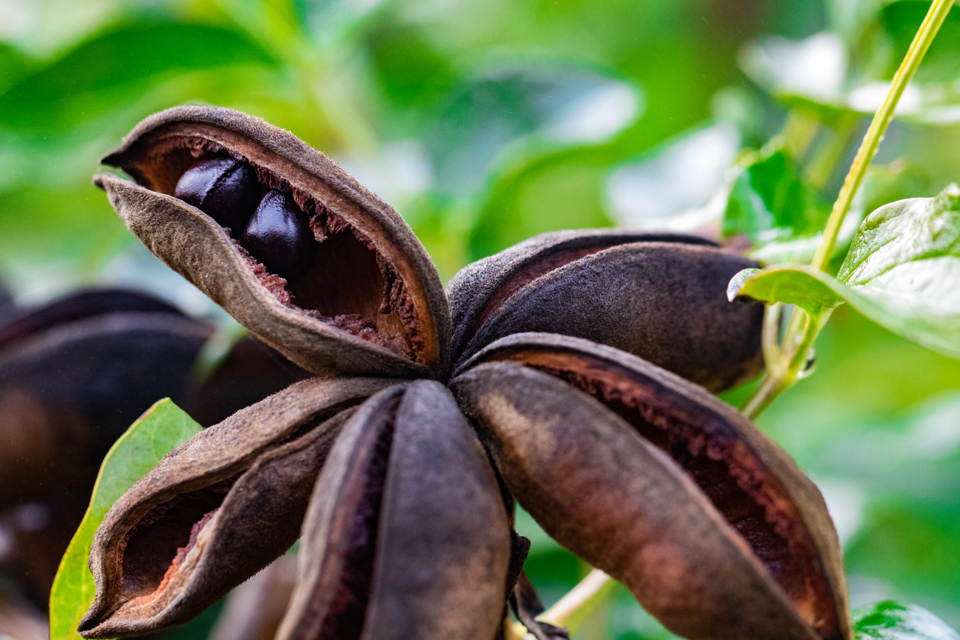
However, should you wish to grow these plants from seed, you can do so both with species like Paeonia delavayi and with hybrids.
Note, however, that hybrids grown from seed will not breed true, so may not grow up to resemble the parent plant, and they are often inferior.
However, you might still see some interesting results.
Growing From Seed
To grow from seed:
- Collect seed when pods split open in late summer or autumn. Collect the black seed, which is viable.
- Soon after collecting the seeds, sow them 2.5cm deep in containers of seed compost.
- Cover the compost with a layer of grit and place them in a cold frame, or sheltered spot outside (at the base of a wall, for example).
- Make sure the medium does not dry out in summer and rodents cannot eat the seeds.
- Peony seeds are doubly dormant – roots emerge after the first winter, but stems and leaves only after the second winter.
- You will have to be patient as seedlings will take up to 5 years to reach flowering size.
When To Plant
Tree peonies should be planted in the autumn months, however, you can also plant them in winter or the early spring.
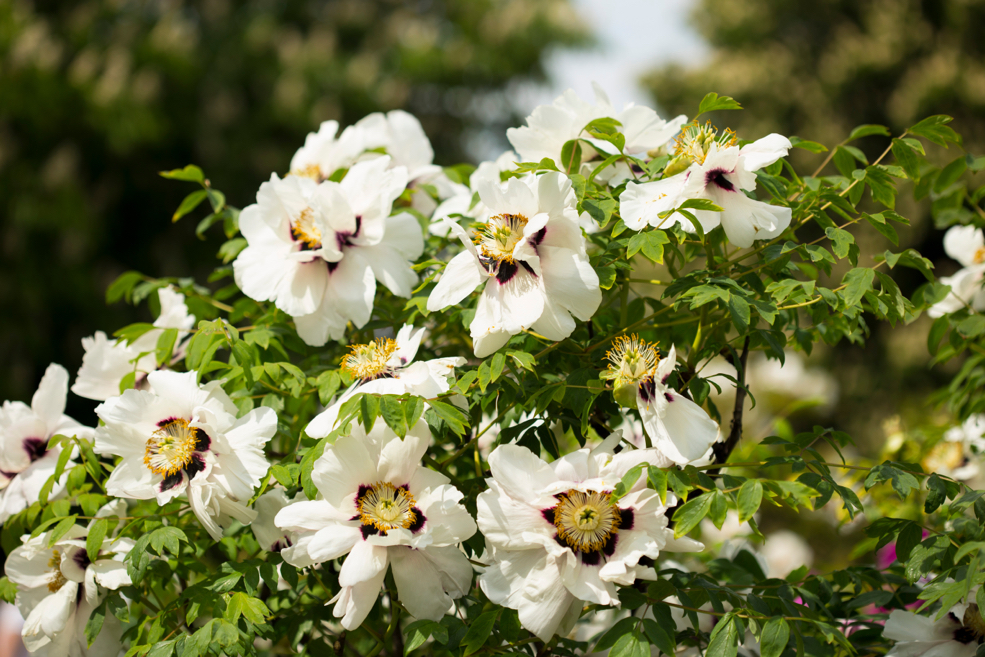
Just make sure to avoid planting any later than early spring as the plants may fail to establish when the weather is too warm and dry.
Where To Plant
Tree peonies require a sunny position or one with light shade.
It is important to avoid frost pockets since, though hardy, their developing buds can be damaged by late frosts.
You should also site a tree peony in a sheltered spot where it will not be damaged by strong winds.
“Walled gardens are ideal for tree peonies but any area of a garden that is protected by structures or trees and shrubs and are south-facing should work well,” says Colin Skelly, a Horticultural Consultant.
“Work in plenty of organic matter to heavy clays or sandy soils to improve drainage and moisture holding respectively.”
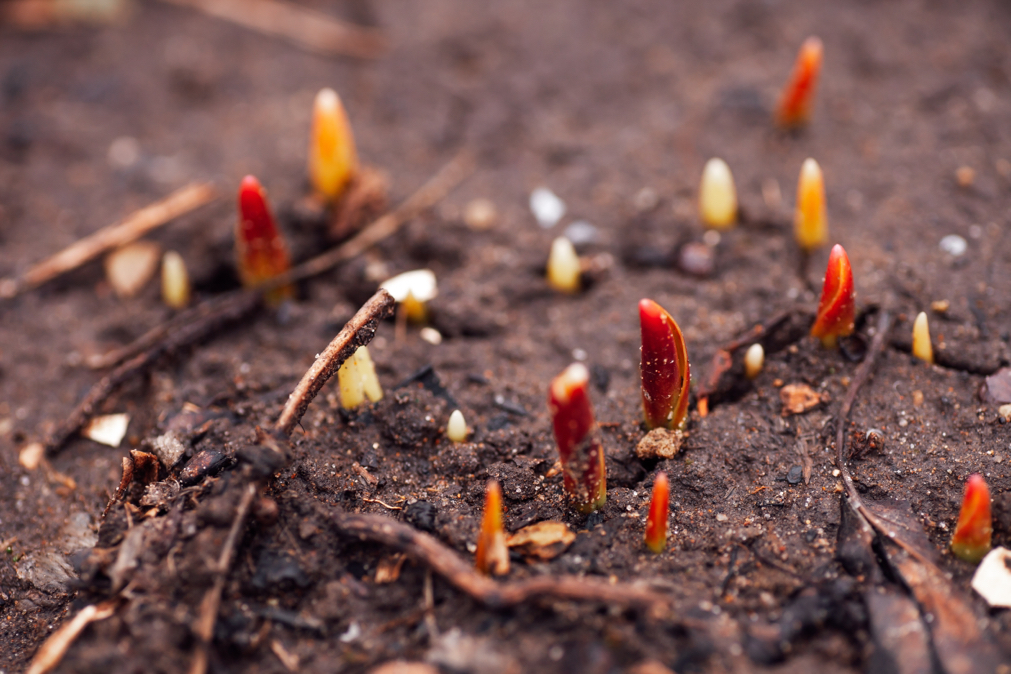
Choose a position where there is neutral, free-draining yet humus-rich soil for best results.
Avoid planting in soil with heavy clay that becomes waterlogged unless and until it has been amended with plenty of organic matter like homemade compost or well-rotted manure.
Graft Union
It is important when planting a tree peony that you have purchased to look for the graft union.
You should see this as a slight bulge close to the base of the stem.
In this case, the graft union should be below the soil surface.
Ideally, aim to make sure that the graft union is around 15cm below ground level.
This helps the grafted plant to develop roots of its own.
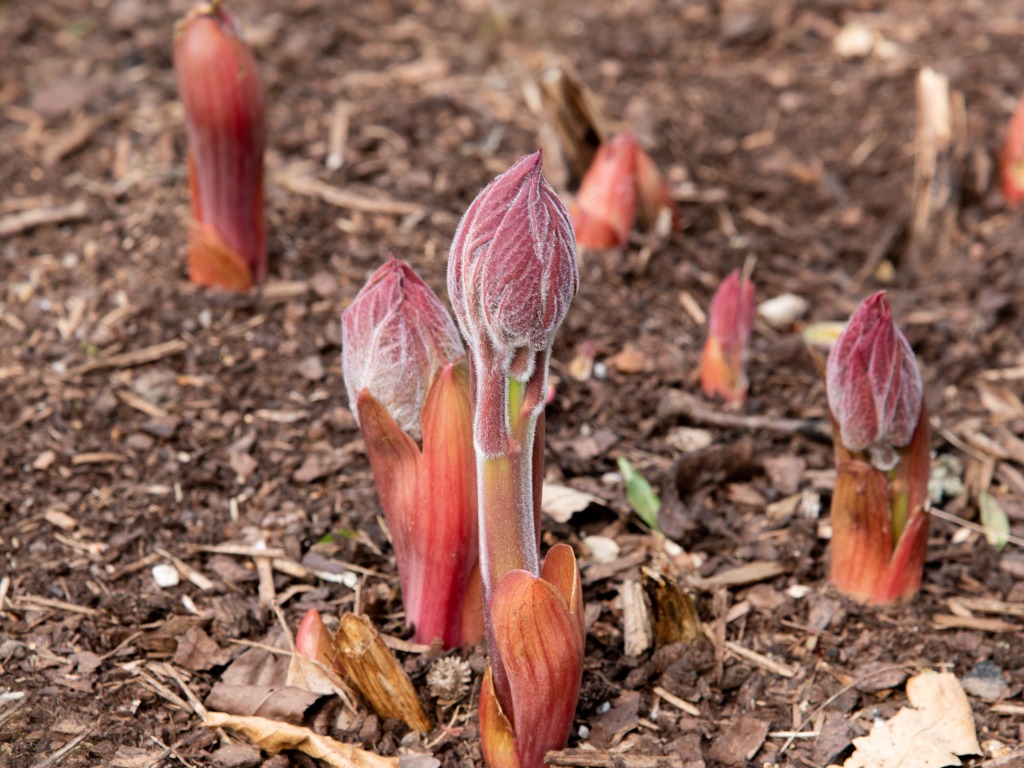
Water the tree peony in well, then mulch around your new shrub with some organic material to conserve moisture and provide slow-release fertility.
Just make sure that the mulch is not piled up around the stem as this can cause it to rot.
Tree Peony Care
Light
Tree peonies are happy in a sunny spot as long as the soil conditions are right, and can also thrive in light shade.
Temperature & Humidity
These plants are H6 hardy in the UK and are able to withstand even harsh winter conditions.

However, as mentioned above, they may be damaged by strong winds or late frosts.
Watering
Tree peonies should be watered regularly during dry spells during their first summer, but once established, their deep roots mean that they will not have high watering needs and routine watering will not be required.
Deadheading
Dead flowers can be removed after flowering if you do not wish to collect seed.
Feeding
In reasonably nutrient-rich soils, applying a good quality organic mulch and replenishing this each year in spring should be sufficient enough to meet this plant’s nutrient needs.
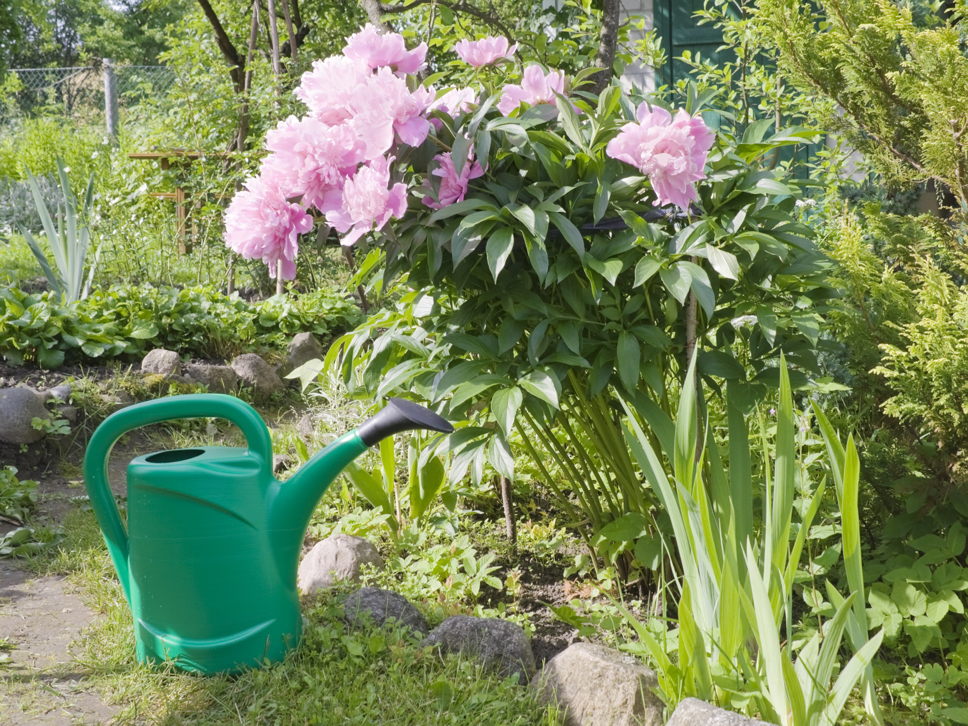
If growth seems poor, you can also add a balanced organic fertiliser in spring.
Overwintering
These plants are fully hardy and will not need winter protection.
They will lose their foliage, but their woody structure of branches will remain in place until the following year.
Container Growing
Tree peonies are relatively large and deep-rooted plants once mature, and so are not necessarily the best choice for long-term container cultivation.
If you are looking for peonies to grow in pots then herbaceous types are likely to be better options.
Pruning
Very light maintenance pruning only is required.
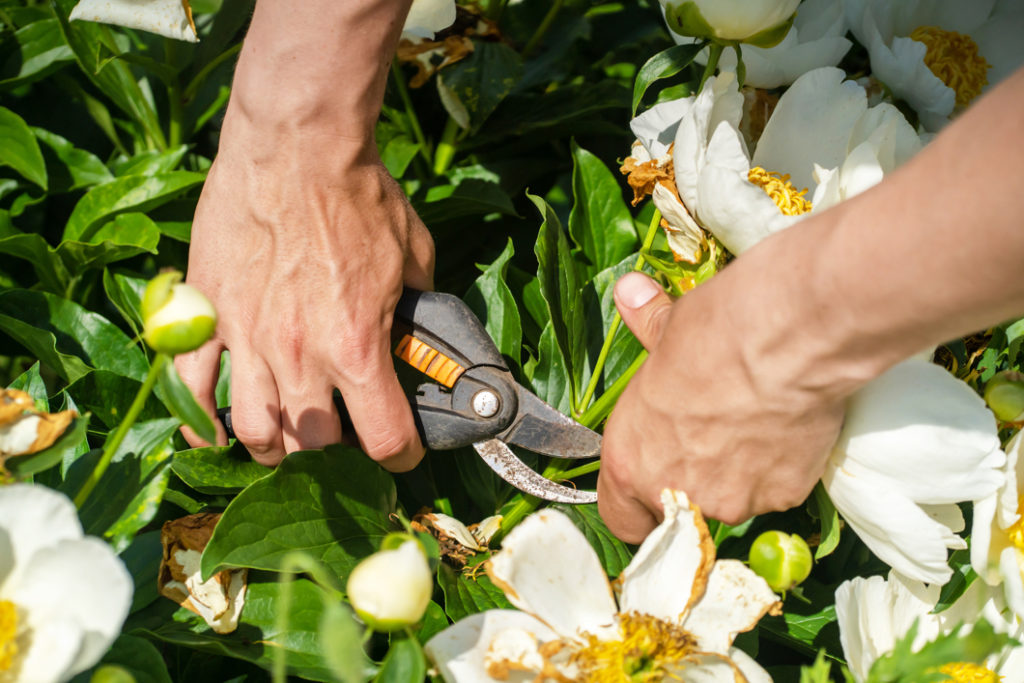
Remove any dead shoots in winter, cutting back to a healthy bud.
Occasionally, you may wish to prune to remove flowering shoots in summer, or in the autumn after seeds (if you wish to collect them) have matured, but this is not usually required.
References
- 1Zhou, S., Zou, X., Zhou, Z., Liu, J., Xu, C., Yu, J., Wang, Q., Zhang, D., Wang, X., Ge, S., Sang, T., Pan, K., & Hong, D. (2014). Multiple species of wild tree peonies gave rise to the ‘king of flowers’, Paeonia suffruticosa Andrews. The Royal Society Proceeding B: Biological Sciences, 281(1797), 20141687. https://doi.org/10.1098/rspb.2014.1687
